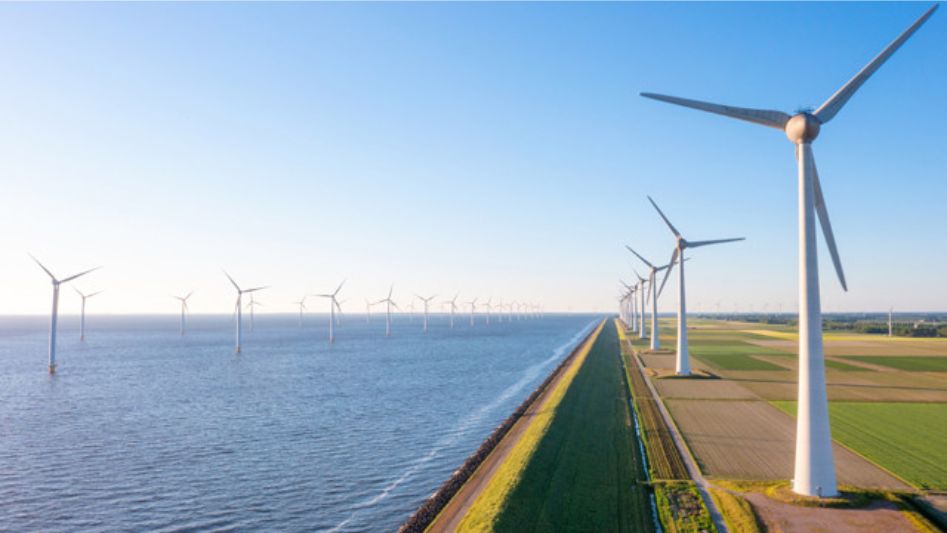Expensive Offshore Wind Farms: Why Energy Firms Are Turning Away

Table of Contents
Skyrocketing Capital Expenditure and Financing Challenges
The high cost of offshore wind farm development is a major deterrent for many energy companies. These projects require substantial upfront investment and securing financing presents significant hurdles.
High Initial Investment Costs
Developing offshore wind farms demands a significant upfront capital expenditure. Costs are dramatically higher than onshore wind projects due to several factors:
- Site Surveys and Environmental Impact Assessments: Thorough investigations are needed to identify suitable locations and assess environmental impacts, adding substantial costs.
- Turbine Procurement and Installation: Offshore turbines are larger and more sophisticated than their onshore counterparts, resulting in higher procurement and installation costs. Specialized vessels are required for transportation and installation in deep waters.
- Grid Connection: Connecting offshore wind farms to the onshore grid requires extensive subsea cabling and potentially significant upgrades to onshore infrastructure, adding millions to project costs.
- Foundation Installation: The complex and expensive nature of installing foundations in deep water environments, often requiring specialized and large-scale equipment, significantly impacts the overall cost.
- Permitting Processes: Lengthy and complex permitting procedures contribute to considerable delays and administrative costs.
These factors combine to make the cost per megawatt (MW) significantly higher for offshore wind than onshore wind or other renewable energy sources. Reports indicate that offshore wind can cost upwards of $4-6 million per MW, compared to $1-3 million for onshore wind.
Securing Project Financing
Securing funding for these massive, long-term projects is incredibly challenging.
- Increasing Interest Rates: Rising interest rates make borrowing more expensive, increasing the overall project cost and reducing investor returns.
- Energy Price Uncertainty: Fluctuations in long-term energy prices create uncertainty about the project's future profitability, making investors hesitant.
- Regulatory Risk: The unpredictable nature of regulatory frameworks and the potential for delays and changes increase the risk for investors. This risk aversion leads to higher financing costs or, worse, project cancellations.
Technological Hurdles and Operational Risks
The complex technology and harsh marine environment pose significant challenges to the operational viability and profitability of offshore wind farms.
Technological Complexity and Maintenance Costs
Offshore wind turbines rely on sophisticated technology, making them susceptible to malfunctions and requiring specialized maintenance.
- Accessibility Challenges: Accessing and servicing turbines in harsh marine environments is difficult, time-consuming, and expensive. This impacts both routine maintenance and emergency repairs.
- High Maintenance Costs: The specialized equipment, skilled labor, and challenging weather conditions lead to significantly higher maintenance and repair costs compared to onshore wind farms.
- Technological Advancements: While ongoing technological improvements aim to improve efficiency and reduce maintenance needs, these advancements often bring their own initial costs and learning curves.
Grid Integration Difficulties
Integrating large-scale offshore wind farms into existing electricity grids presents significant engineering challenges.
- Grid Upgrades: Existing grids often require substantial upgrades to accommodate the influx of power from offshore wind farms.
- Transmission Losses: Subsea cables can experience energy losses during transmission, further impacting efficiency and profitability.
- Grid Stability: Balancing the fluctuating output of offshore wind farms with the overall grid stability is complex and requires advanced grid management technologies.
Regulatory Uncertainty and Permitting Delays
The regulatory landscape for offshore wind is constantly evolving, adding uncertainty and cost.
Lengthy Permitting Processes
Obtaining the necessary permits for offshore wind farm construction can take years.
- Environmental Assessments: Extensive environmental impact assessments are required, involving extensive studies and potentially leading to lengthy delays.
- Regulatory Hurdles: Navigating complex regulatory processes, addressing potential legal challenges, and securing various approvals from different agencies adds significant time and costs.
- Project Delays: These delays can lead to increased financing costs and overall project overruns, negatively impacting profitability.
Evolving Regulatory Frameworks
Changes in government policies and regulations can impact the profitability of offshore wind projects.
- Subsidy Changes: Changes in government subsidies and tax incentives can significantly alter the financial feasibility of a project.
- Environmental Regulations: Unforeseen changes in environmental regulations can lead to costly project redesigns and modifications.
- Policy Uncertainty: Political changes and uncertainty surrounding long-term energy policy further exacerbate the risk for investors.
Supply Chain Bottlenecks and Inflationary Pressures
Global supply chain disruptions and inflation are driving up costs across the board.
Increased Material and Labor Costs
Rising inflation and global supply chain issues are impacting the cost of key components and labor.
- Material Shortages: Shortages of essential materials, such as steel, specialized components, and rare earth elements, drive up prices and delay projects.
- Shipping Delays: Global shipping delays further exacerbate material shortages and contribute to project cost overruns.
- Price Volatility: The volatile pricing of essential materials, further impacted by geopolitical events and unforeseen factors, introduces uncertainty and financial risk.
Lack of Skilled Workforce
A shortage of skilled labor for construction, operation, and maintenance adds to the cost burden.
- High Wages: The limited supply of skilled workers drives up wages, contributing to higher project costs.
- Training Needs: Significant investment in training programs and workforce development initiatives is required to address this skills gap.
- Competition for Labor: The burgeoning renewable energy sector globally creates competition for the limited pool of skilled labor, further driving up wages and creating competition for the same resources.
Conclusion
The high costs associated with offshore wind farm development, encompassing capital expenditure, technological challenges, regulatory hurdles, and supply chain issues, are prompting energy firms to reconsider their investment strategies. While the potential of offshore wind for clean energy is vast, addressing these challenges through technological advancements, streamlined regulations, and a robust supply chain is crucial to make this renewable energy source economically viable. Investing in innovative solutions and creating a supportive regulatory environment are critical steps towards ensuring the future success of affordable and accessible offshore wind energy projects. Only by addressing the issues surrounding expensive offshore wind farms can we unlock the full potential of this crucial technology for a sustainable energy future.

Featured Posts
-
 Daisy May Cooper Admits To Past Shoplifting Leading To Job Loss
May 03, 2025
Daisy May Cooper Admits To Past Shoplifting Leading To Job Loss
May 03, 2025 -
 Gewinnzahlen Lotto 6aus49 Mittwoch 9 April 2025
May 03, 2025
Gewinnzahlen Lotto 6aus49 Mittwoch 9 April 2025
May 03, 2025 -
 Analyzing Tulsas Recent Winter Weather Key Statistics
May 03, 2025
Analyzing Tulsas Recent Winter Weather Key Statistics
May 03, 2025 -
 Backlash Over Fans Kiss Christina Aguilera Responds
May 03, 2025
Backlash Over Fans Kiss Christina Aguilera Responds
May 03, 2025 -
 Sfynt Astwl Alhryt Wqaye Alhjwm Alisrayyly Wartdadath Ela Ghzt
May 03, 2025
Sfynt Astwl Alhryt Wqaye Alhjwm Alisrayyly Wartdadath Ela Ghzt
May 03, 2025
Latest Posts
-
 Depraved Paedophile Jailed Joint Police Operation Secures Conviction
May 04, 2025
Depraved Paedophile Jailed Joint Police Operation Secures Conviction
May 04, 2025 -
 Alleged Torture Starvation And Assault Lead To Murder Charge Against Stepfather Of 16 Year Old
May 04, 2025
Alleged Torture Starvation And Assault Lead To Murder Charge Against Stepfather Of 16 Year Old
May 04, 2025 -
 Murder Charge Filed Against Stepfather Accused Of Torturing Starving And Beating 16 Year Old Stepson
May 04, 2025
Murder Charge Filed Against Stepfather Accused Of Torturing Starving And Beating 16 Year Old Stepson
May 04, 2025 -
 Stepfather Faces Murder Charges In Stepsons Death Allegations Of Torture Starvation And Assault
May 04, 2025
Stepfather Faces Murder Charges In Stepsons Death Allegations Of Torture Starvation And Assault
May 04, 2025 -
 Hospital Hammer Incident Belfast Mans Violent Past Revealed
May 04, 2025
Hospital Hammer Incident Belfast Mans Violent Past Revealed
May 04, 2025
